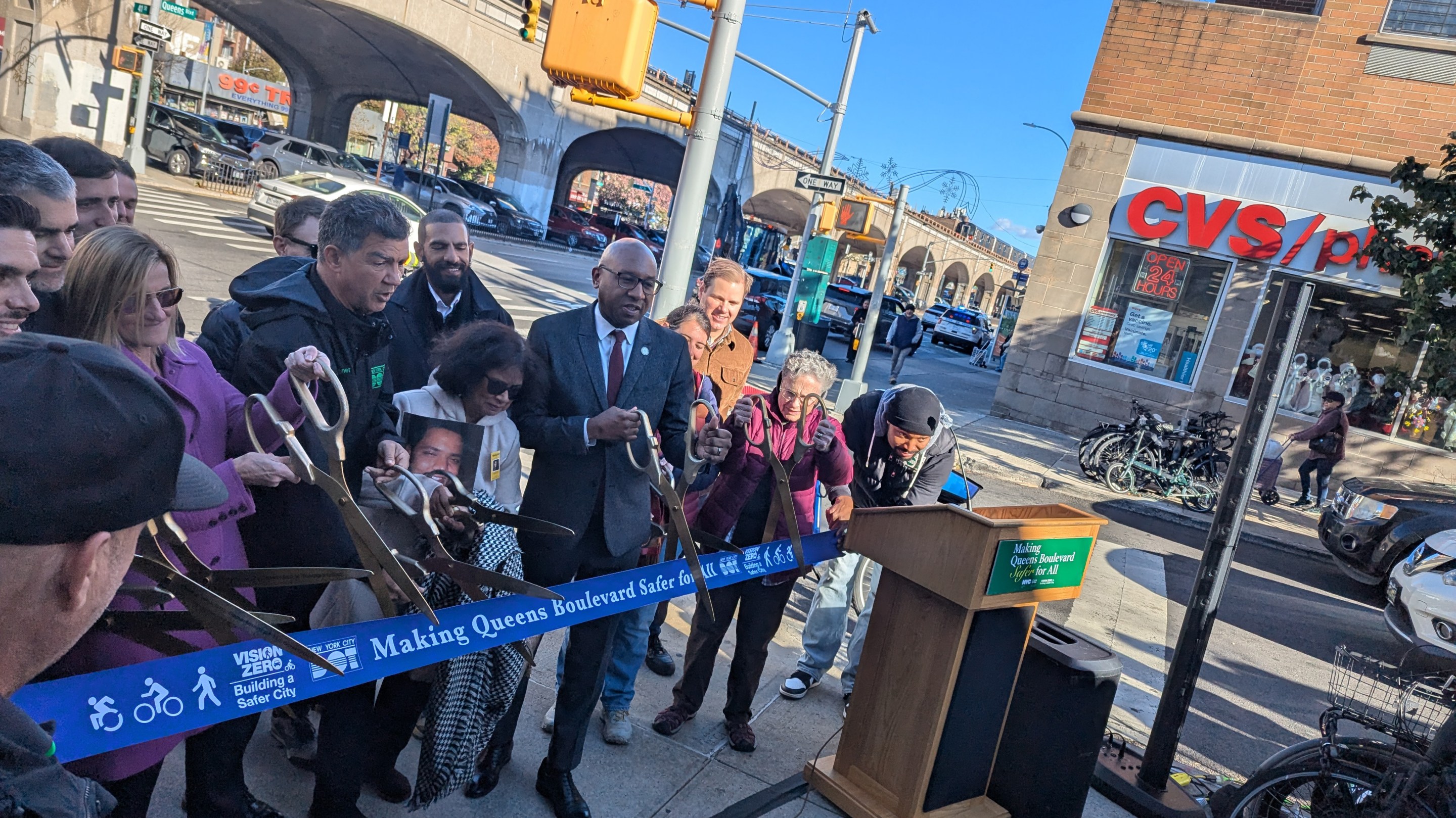City officials cut the ribbon on Tuesday on new protected bike lanes on a segment of Queens Boulevard — capping a decade of redesigns of the former "Boulevard of Death" that have reduced pedestrian injuries by 35 percent.
Protected bike lanes now run along all but one block of Queens Boulevard from Jamaica to Long Island City, including the segment alongside the elevated 7 train tracks where the Department of Transportation installed them this year between Skillman and Roosevelt avenues.
As recently as 2018, DOT officials opted to put protected bike lanes on nearby Skillman and 43rd avenues instead of providing a direct safe connection along the 7 train through Sunnyside. Today, all three streets are safe for cycling.
"Several elements of this redesign aim at enhancing safety for all road users: Curbside bike lanes to enhance cyclist safety, pedestrian islands to shorten crossing distances while encouraging slower, safe turns, and additional adjustments to traffic signal timing to allow more time for pedestrians to cross before the lights turn green," DOT Commissioner Ydanis Rodriguez said at Tuesday's ribbon-cutting. "These improvements are a reminder that streets are not just for cars, but for all people — whether they drive but especially when they walk or ride their bike."

Once infamously dubbed "the Boulevard of Death," Queens Boulevard got its first protected bike lanes between Roosevelt Avenue and 73rd Street back in 2015 under then-Mayor Bill de Blasio. DOT has expanded the protected lanes piece-by-piece since — 73rd Street to Eliot Avenue in 2016, Eliot Avenue to Yellowstone Boulevard in 2017, Yellowstone Boulevard to Union Turnpike in 2021 and Union Turnpike to Hillside Avenue in 2023.
DOT will now move to building out segments of the protected lanes in concrete — a project set to cost $250 million. Renderings for the concrete project show DOT plans to use mountable curbs for the project, which could leave the bike lanes vulnerable to obstructions.
It hasn't always been easy sailing: The segments from Eliot Avenue to Union Turnpike faced opposition from the local community boards, with de Blasio stalling the segment from Yellowstone to Union Turnpike for years — reportedly as a bargaining chip in the fight over whether to build a new jail in the area.
Total traffic fatalities are down 68 percent on Queens Boulevard since DOT began putting bike lanes on the corridor nine years ago, according to city stats. Pedestrian injuries are down 35 percent, while the number of people cycling on the corridor has surged as much as 450 percent on the corridor.
Speaking at Tuesday's ribbon-cutting, Families for Safe Street activist Lizi Rahman, whose son Asif was killed biking on Queens Boulevard in 2008, said even her friends doubted she'd succeed when she set out to get a bike lane on the strip after his death.
"I think that this bike lane and redesign Queens Boulevard is a model for not only this particular borough or particular area, it's a model for the whole New York, whole United States and wherever there is a dangerous road," Rahman said.
"At the beginning some elected officials, they said it's not possible — it's not possible to get a bike lane. I was told by some of my supporting friends that, even though they supported me they had no hope. They didn't think that it would be possible. But you know, it's been possible. It can be possible if you just give your all to get something."






